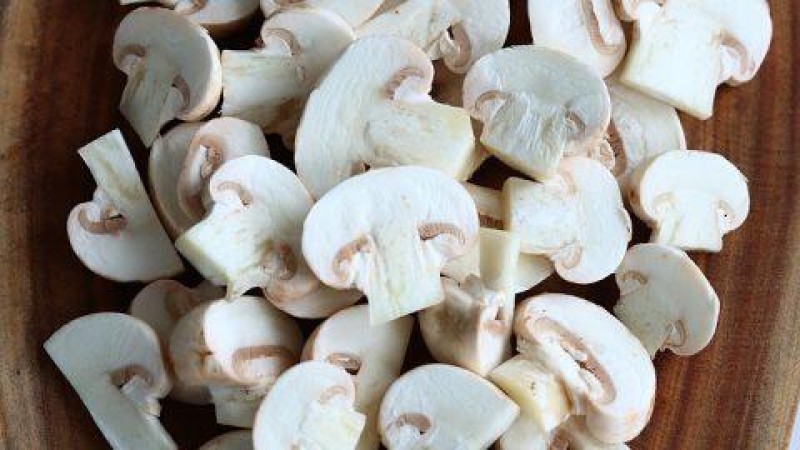Mushrooms are a culinary delight, adding rich flavors and textures to various dishes. However, cleaning mushrooms can be a daunting task due to their delicate nature and propensity to hold onto dirt. Fret not! Here are some simple and effective tricks to clean even the dirtiest mushrooms, ensuring they’re kitchen-ready without losing their delicious qualities.
Why Proper Mushroom Cleaning Is Essential
Cleaning mushrooms properly is crucial for several reasons. First, dirt and debris can affect the taste and texture of your dish. Second, consuming unclean mushrooms can pose health risks. Therefore, knowing the right cleaning techniques is essential for both culinary and health purposes.
Understanding Mushroom Types
Different types of mushrooms require different cleaning methods. Let’s break down the common varieties and the best ways to clean them.
Common Mushroom Varieties
- Button Mushrooms: These are the most common and are often used in a variety of dishes.
- Portobello Mushrooms: Known for their large size and meaty texture, they are often used as a meat substitute.
- Shiitake Mushrooms: These have a rich, smoky flavor and are commonly used in Asian cuisine.
- Oyster Mushrooms: Delicate and tender, these are popular in stir-fries and soups.
- Morel Mushrooms: These have a honeycomb appearance and are highly prized for their unique flavor.
Tools You’ll Need
Before diving into the cleaning process, gather these tools:
- Soft brush or toothbrush
- Paper towels
- Kitchen towel
- Small paring knife
- Bowl of water (optional)
Step-by-Step Guide to Cleaning Mushrooms
Dry Brushing Method
Why Choose Dry Brushing?
Dry brushing is a gentle method that preserves the mushroom’s texture and flavor.
Steps to Dry Brush Mushrooms
- Inspect the Mushrooms: Check for any visible dirt or debris.
- Brush Off Dirt: Use a soft brush or toothbrush to gently brush away dirt from the mushroom's surface.
- Wipe with a Towel: Use a paper towel or kitchen towel to wipe off any remaining dirt.
Using a Damp Cloth
When to Use a Damp Cloth
For mushrooms with more dirt, a slightly damp cloth can be more effective.
Steps to Clean with a Damp Cloth
- Dampen the Cloth: Moisten a cloth with a small amount of water.
- Wipe the Mushrooms: Gently wipe each mushroom to remove dirt.
- Dry Immediately: Use a dry cloth or paper towel to pat the mushrooms dry.
Rinsing Method
Is Rinsing Safe?
While some chefs avoid rinsing mushrooms due to their porous nature, it can be done if you’re careful.
Steps to Rinse Mushrooms
- Quick Rinse: Place mushrooms in a colander and rinse them quickly under cold water.
- Shake Off Excess Water: Gently shake the colander to remove as much water as possible.
- Pat Dry: Immediately pat the mushrooms dry with a paper towel or kitchen towel.
Cleaning Stubborn Dirt
Using a Paring Knife
For stubborn dirt, a paring knife can be very handy.
Steps to Use a Paring Knife
- Trim the Stems: Cut off the tough ends of the mushroom stems.
- Scrape Dirt: Use the knife to scrape off any remaining dirt gently.
Special Tips for Different Mushroom Types
Button Mushrooms
- Dry Brush: They typically require minimal cleaning, so a dry brush works well.
Portobello Mushrooms
- Remove Gills: Use a spoon to scrape out the gills under the cap for a cleaner look and taste.
Shiitake Mushrooms
- Wipe Carefully: Due to their delicate caps, use a damp cloth and handle them gently.
Oyster Mushrooms
- Separate Clusters: Carefully pull apart clusters to clean between each mushroom.
Morel Mushrooms
- Soak Briefly: Soak in saltwater for a few minutes to remove hidden dirt and insects, then rinse and dry immediately.
Maintaining Mushroom Freshness
Proper Storage Techniques
In the Refrigerator
- Use Paper Bags: Store mushrooms in a paper bag to allow air circulation and prevent moisture buildup.
- Avoid Plastic Bags: Plastic traps moisture and can cause mushrooms to become slimy.
Temperature Control
- Optimal Temperature: Keep your refrigerator at a consistent, cool temperature to maintain mushroom freshness.
Signs of Spoiled Mushrooms
Visual Indicators
- Discoloration: Mushrooms turning dark or developing dark spots should be discarded.
- Sliminess: If mushrooms feel slimy, they are past their prime.
Smell Test
- Off Odors: A strong, unpleasant odor is a sign that mushrooms are no longer good.
Mushroom Cleaning Myths Debunked
Myth 1: Never Rinse Mushrooms
Truth
Rinsing is acceptable if done quickly and mushrooms are dried immediately.
Myth 2: Only Use a Brush
Truth
Using a damp cloth or a quick rinse can be more effective for very dirty mushrooms.
Myth 3: Mushrooms Absorb Too Much Water
Truth
Mushrooms can absorb some water, but if dried promptly, they retain their texture and flavor. Cleaning mushrooms doesn’t have to be a cumbersome task. With the right techniques and tools, even the dirtiest mushrooms can be cleaned quickly and efficiently. Whether you prefer the dry brushing method, using a damp cloth, or a quick rinse, each method has its benefits. Remember to handle mushrooms gently and dry them thoroughly to maintain their best qualities. Happy cooking!
Parenting Tips: How should a mother-daughter relationship be?
Discover the Optimal Age for Motherhood to Address Challenges Faced by Older Women
How Brotherhood Strengthens Bonds: How to celebrate World Brother's Day 2024
